The Planning Phase
This Eclipse had been on my radar for quite some time.
I checked on the timing almost immediately after returning from our 2017 Eclipse
Trip and since we had never seen an Annual Solar Eclipse before, we decided to
pursue this event. At that point, I had plenty of time to pick a location
and plan the trip.
In late 2022, I reviewed the event specifics, path
location, timing and typical cloud cover during October. The eclipse would
begin mid morning and last until Noon, so getting to the site would not be much
of an issue. Average Cloud Cover information told me the SW region, Utah,
Arizona and New Mexico were likely to have less of a chance of cloud over during
mid October. I also wanted to be setup near the central path of the
eclipse to maximize the annual ring time.
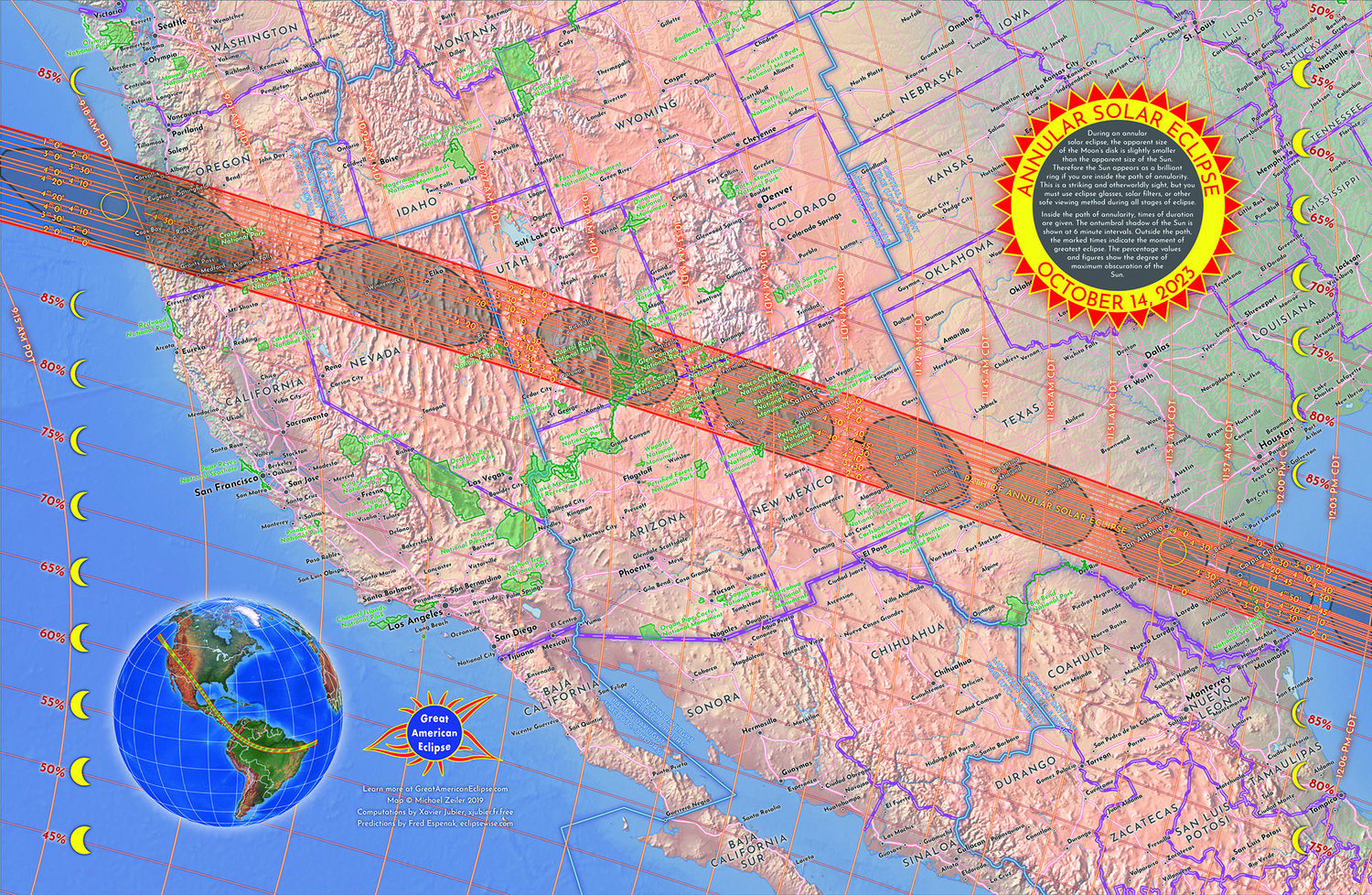
Viewing Site Selection - Albuquerque, New Mexico
Albuquerque, NM
seemed to fit the requirements to best. Median Cloud cover was about 30%, near
the lowest probability on the eclipse path. The Albuquerque metro area
covered the central path and timing would be good. The downside was, that
gave us a 20 hour drive to make from Illinois, so we would plan multiple days
for the trip.
Next task would be to pin point a location that would fit the requirements.
I wanted a spot with an open view of the SE horizon, relatively public area
where I could setup and access to facilities if needed. I checked on Google
Maps for a number of days trying to find a good location. I ended up with two or
three viewing sites in the North suburbs of the city. My 1st choice was a
Wal-Mart Supercenter parking lot in Rio Rancho, NM. The lot appeared to
have a good SW view and it would allow me to setup in the far end of the lot
away from the main building. October 14th was on a Saturday, so I figured
traffic would be a big issue. It would be easy to navigate there, since it was
near the corner of two main streets.
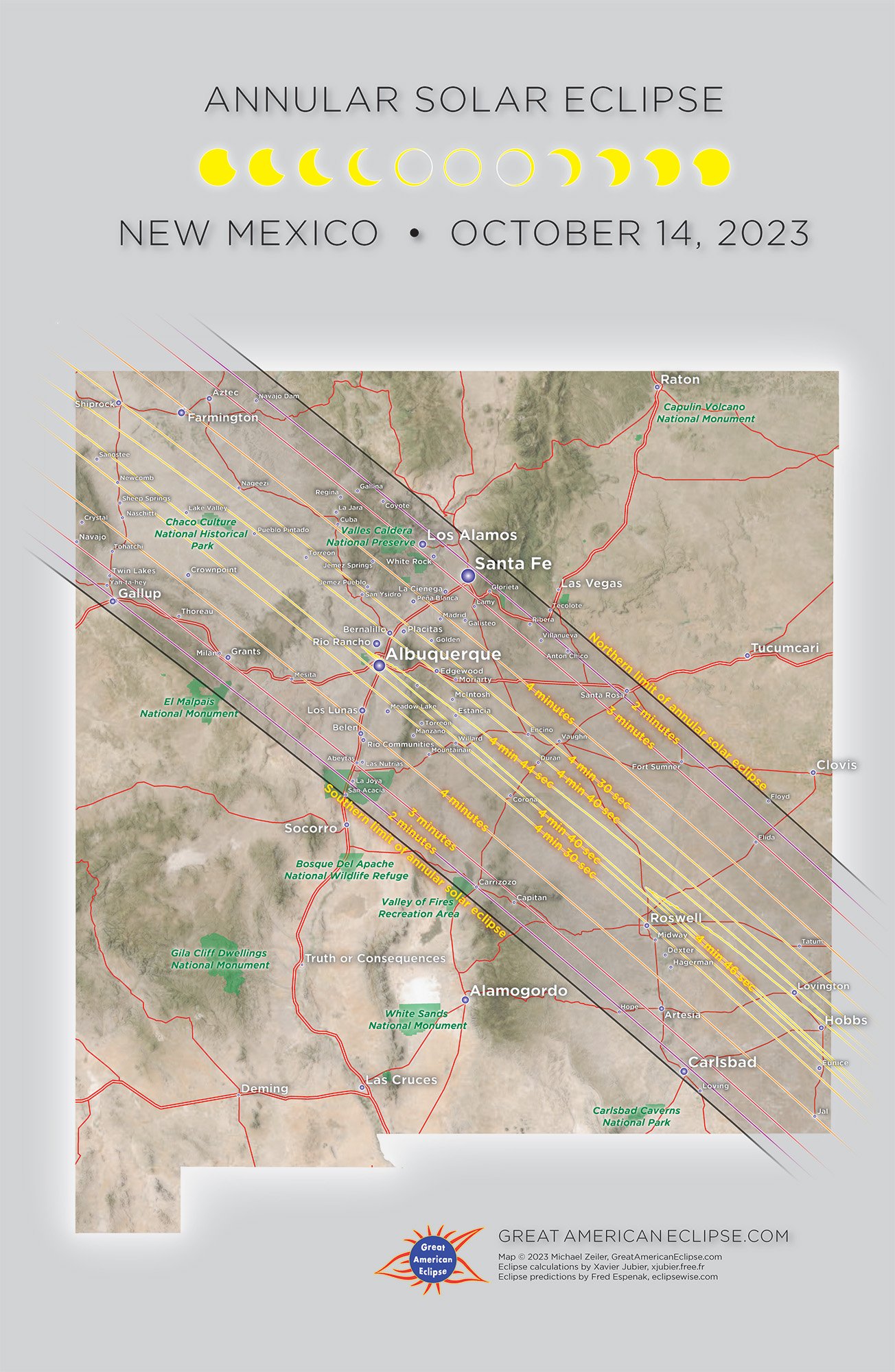
Preliminary Site Visit August 2023
The next task was to book lodging for the night of October 13th and also plan
the Site Visit Trip in August. I very quickly found out that the 2023
Albuquerque International Balloon Fiesta was October 7th thru October 15th.
This would cause a problem with hotels in the area and possible traffic issues.
I found a few hotels, but the cost ranged from $300 to $500 for the night.
After some searching, Santa Fe was only about 1 hour away and hotels were
available at typical rates, so I booked the night of October 13th in Santa Fe.
The Site Visit trip was planned for Aug 6th. We would take two days to get
to NM, check out the site, then spend a few days in Colorado before heading back
home.
Everything went well for the trip.
I won't go into the specific details, but we covered Illinois, Missouri,
Oklahoma, Texas and New Mexico. We visited the site in the morning to get
a feel for the sun position. Everything looked good. The two shots
below are of the setup site and the SW view. The parking lot turned out to be ideal.
We did decide to add one more travel day for the October trip, since daylight
hours would be getting shorter and we wouldn't need any 10 to 12 hour driving
days.
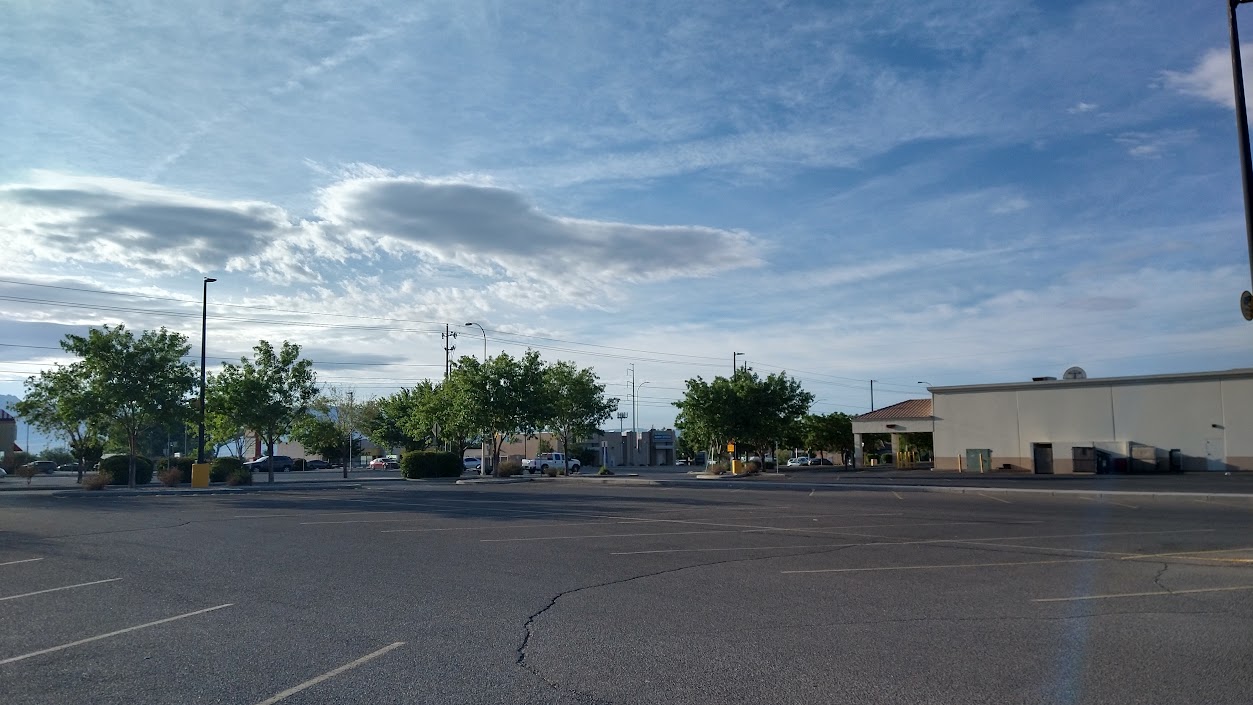 |
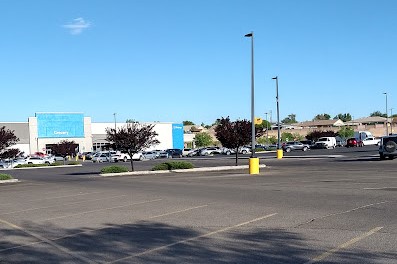 |
|
| SW View from the Setup Location | View of the Setup Location | |
The Real Thing - October 2023
Our plan was to
leave for Albuquerque on Wednesday October 11th and give us 3 travel days.
I decided to pack up the car the night before. It took quite a bit of time
to fit every thing in to the back of my Prius. For equipment I took a Lunt
50mm Solar Scope, with QHY5III178 Mono Camera, tripod and mount, my Celestron C5
scope with Solar Filter, ASI 294MC Camera, tripod and mount. Two laptop
computers, one for each scope, four battery packs - two for the scopes and two
for the computers, two fold up tables, two fold up chairs and a Canon T3i Camera
with solar filter. We also had our suit cases and food coolers. It
was a bit tight, but everything fit as planned.
We left early on Wednesday morning with our desistantion for the night of
Kansas City. Our thip took us to Sterling IL, I-80 to Des Moines IA then
South on I-35 to KC. On the 12th, we took I-35 to Oklahoma City, the
shortest leg of the trip. The 13th was Oklahoma City to Amarillo on I-40,
then on to Tucumcari, Santa Rosa then North on 285 at Clines Corners up to Santa
Fe. We arrived Friday afternoon during the rush, got to our hotel and
called it a night. On the 14th, we hit the road at 6 AM to avoid any potential
traffic. We took I-25 South and turned off going West towards Rio Rancho.
The Balloon grounds were farther South and to the East of I-25, so we didn't run
into any problems.
We got to our site just after 7 AM and went into Wal-Mart to pick up a few
things before setting up. One thing I noticed when we pulled into the lot
was there were a few vehicles parked in the outer portion of the lot where I
was. As it turned out, they were also there to view eclipse. I
really didn't expect anyone else to be there for the same reason that I was.
After setting up, we waited for 9:13 AM and the eclipse to begin. I have a
few pictures of my setup and some of the other people near me.
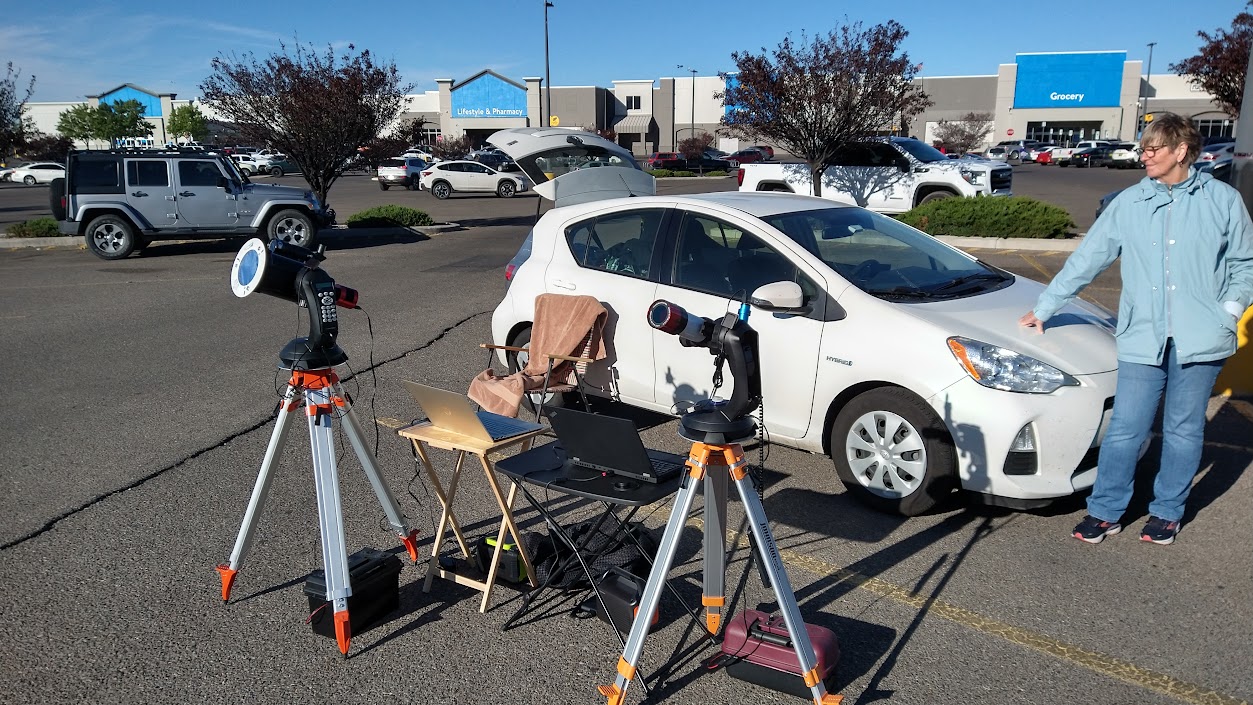 |
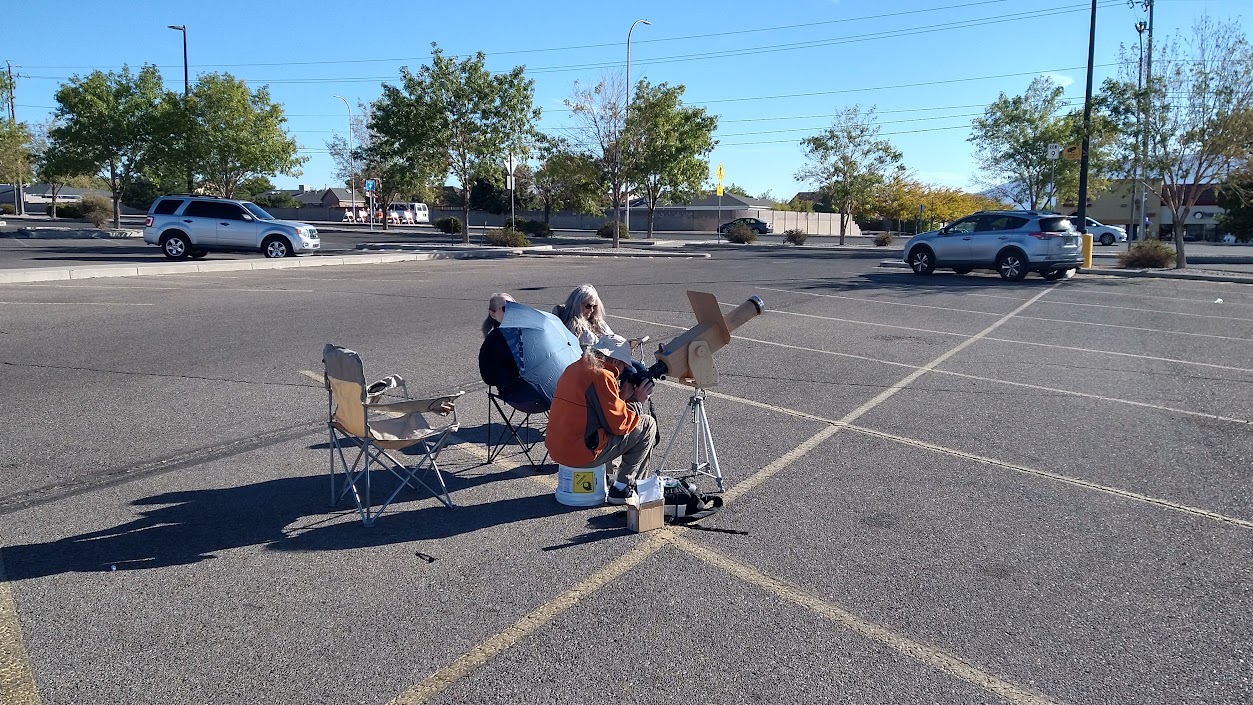 |
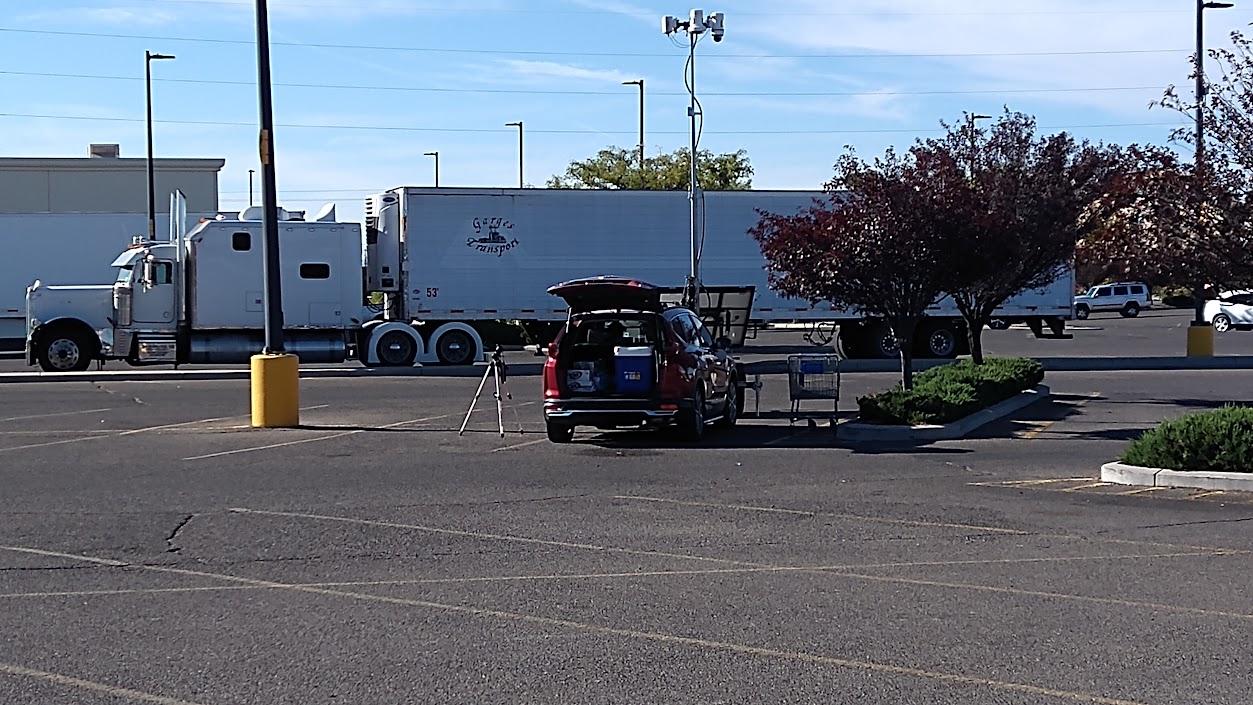 |
| My Setup | Observer from Brooklyn NY | Another Observer |
9:13 AM to 12:09 PM MST
I took over 400 images with my 2 scopes and my hand held camera. The Solar
Scope was setup to take images every 2 minutes during the most of the eclipse.
When I was within 10 minutes of mid-eclipse, I set the interval to every 20
seconds. The C5 was setup with an image every 1 minute and again going to
20 seconds within 10 minutes, before and after mid-eclipse. I would then
occasionally take an image with my Canon T3i. It had an white light filter
on a 400 mm lens.
During the eclipse, I was making sure the images were staying centered within
the camera frames. This required occasional adjustments, since the solar motion
is slightly different than star motion that the mounts use for tracking.
In general the mounts did a great job tracking.
We also had a number of people stop by in their vehicles asking if we had any
extra solar glasses or if we knew where they may be purchased. We
were told that the media had done a great job alerting people of the eclipse
and the needed for special view glasses and where they could be obtained.
We also had a few people get out of their vehicles and come over to see what was
going on. It was fun to show the setups and to answer questions about the
eclipse. I gave one gentleman my web site, so hopefully he will get a
chance to see some of my images of the event. Here are a couple of images
taken of the equipment during the eclipse.
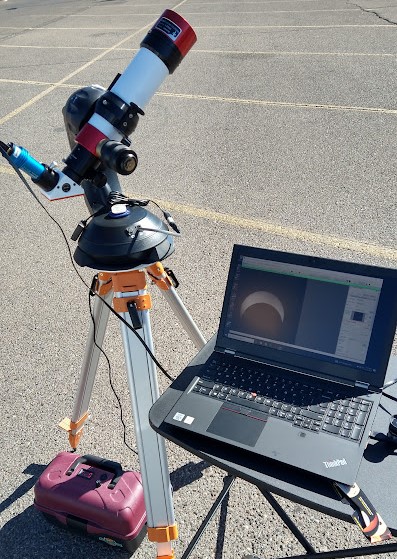 |
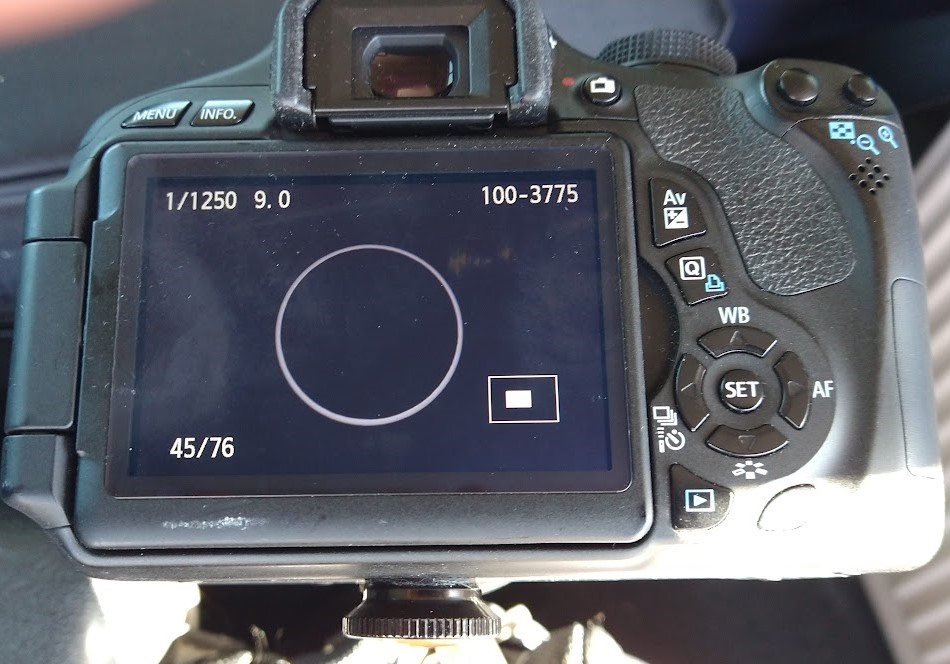 |
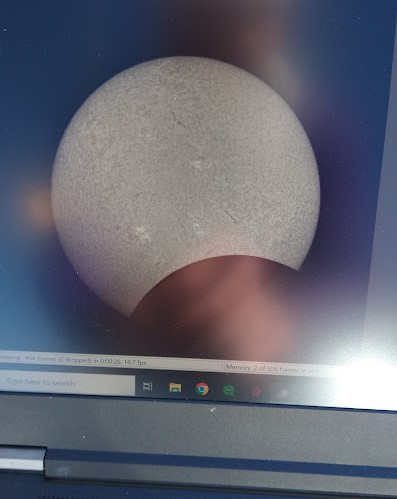 |
| 20 minutes after Max | At Mid Eclipse | 1 hour and 10 minutes after Max |
Other Images from 14 October 2023 - Annular Eclipse
Here are a few more images from the Eclipse. You can clearly see the small
Sunspots on the first image, which was a few minutes after eclipse start.
There is another on from the Lunt Solar Scope in Hydrogen-Alpha light.
There is also an animation of the entire 3 hours of the eclipse. You can
tell when I go from 1 minutes images to 20 second images, then back to 1 minute.
The second row shows the Sun at 2nd Contact, at Mid Eclipse and then at 3rd
Contact. This sequence took about 5 minutes in total.
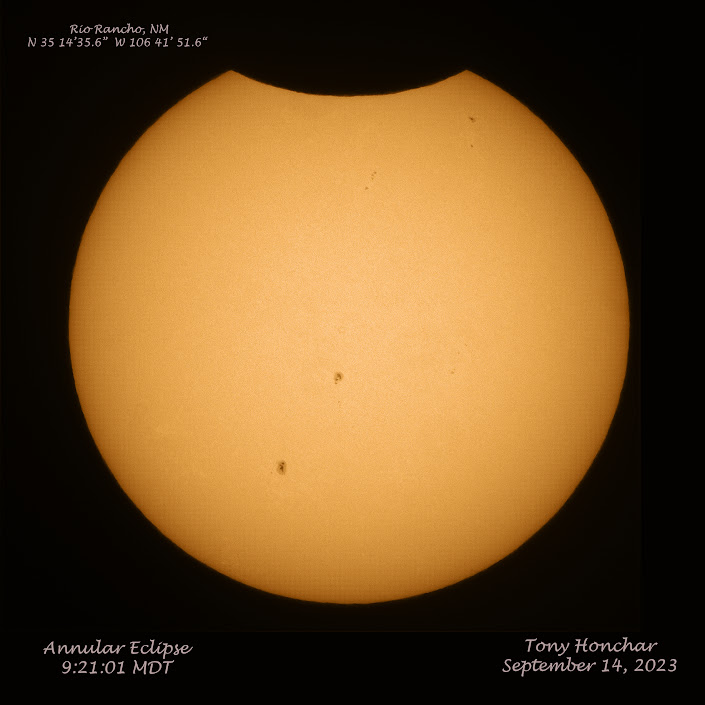 |
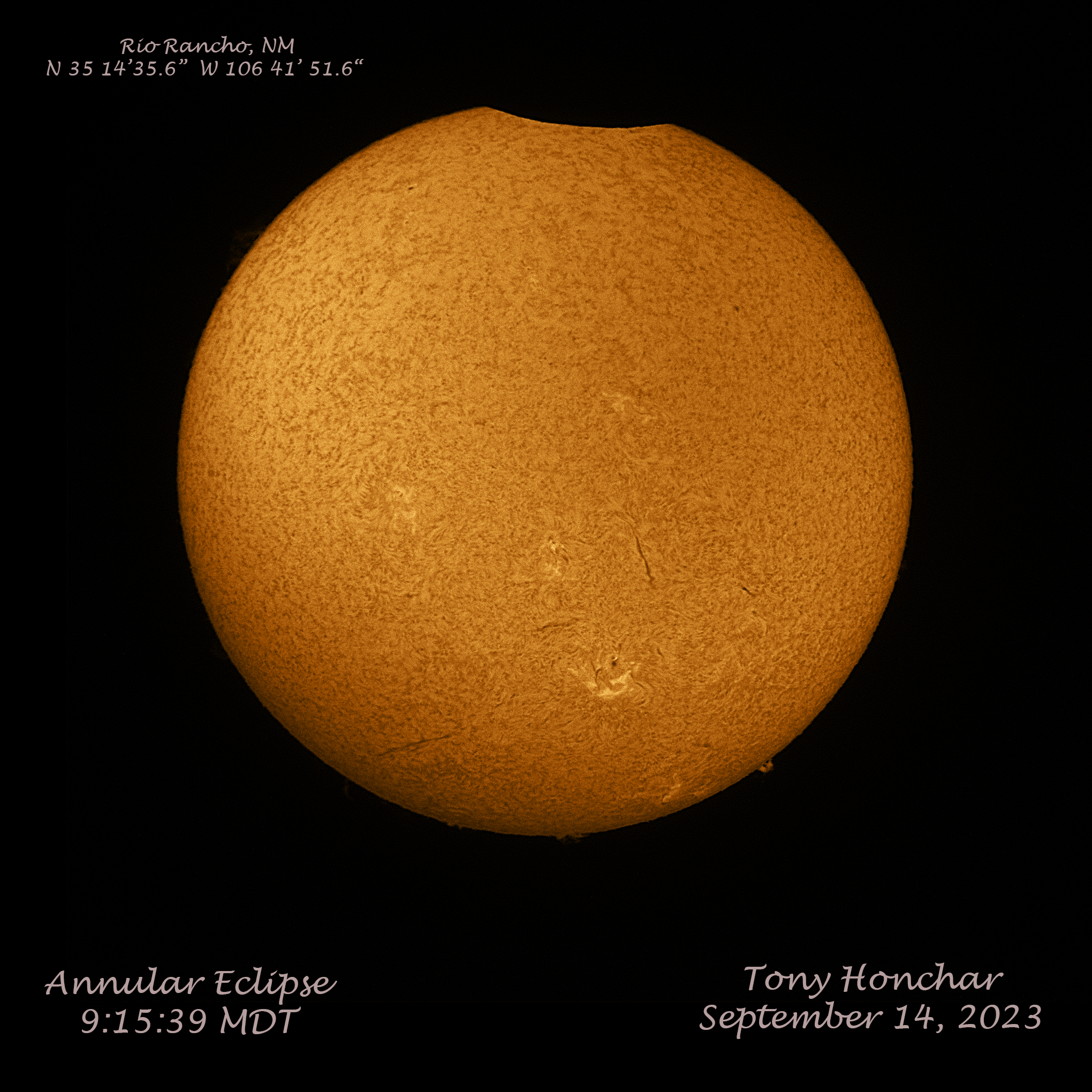 |
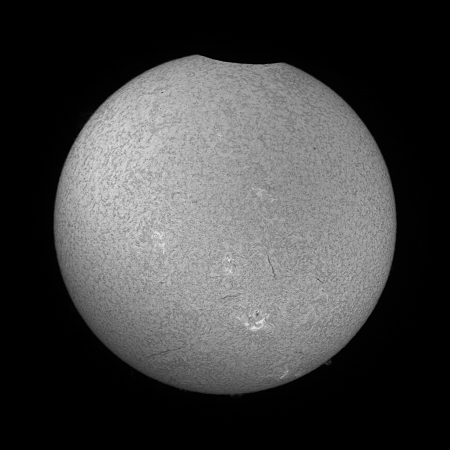 |
| 8 minutes after Eclipse Start | 2 minutes after Eclipse Start -H/Alpha | Click to see Eclipse Sequence |
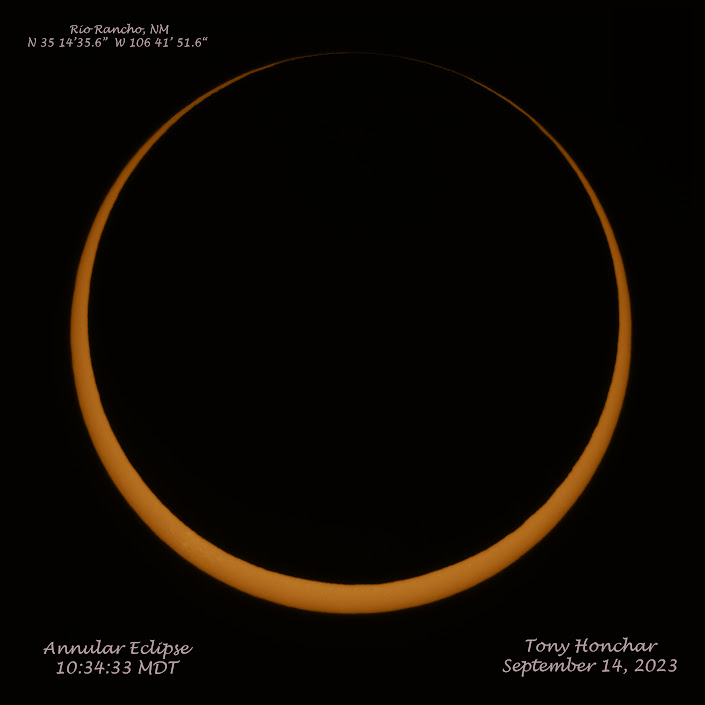 |
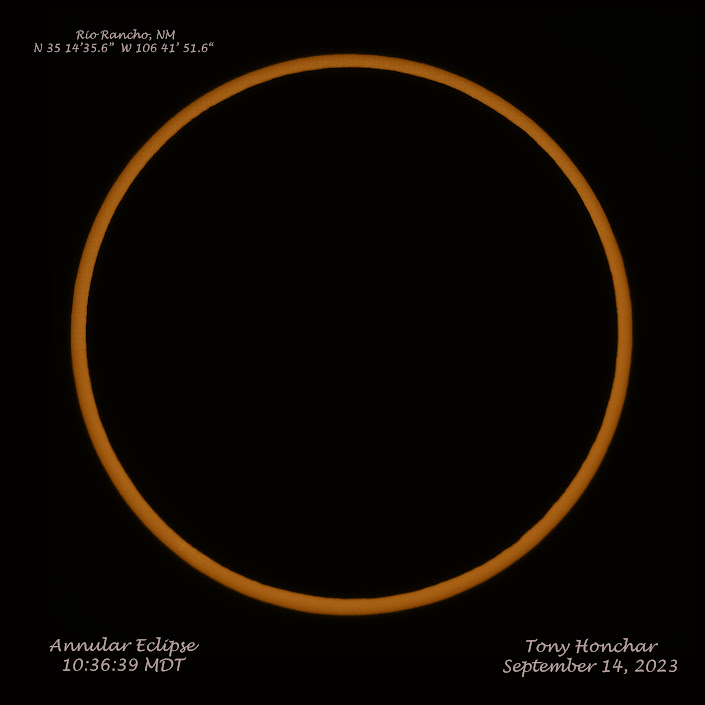 |
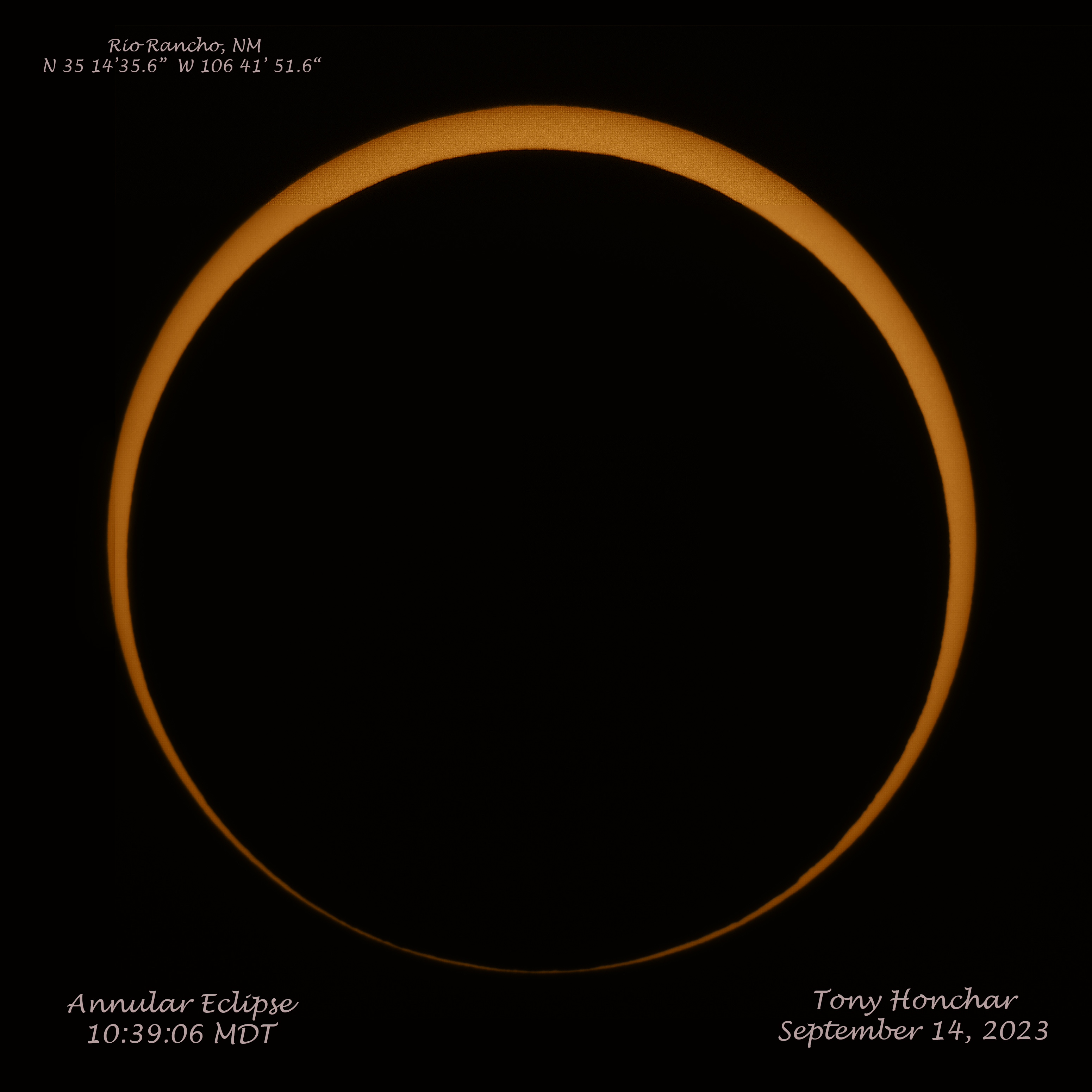 |
| 2nd Contact - 1 hr 17 min after Start | Mid Eclipse - 1 hr 19 min after Start | 3rd Contact - 1 hr 22 min after Start |
2 Jan 2024